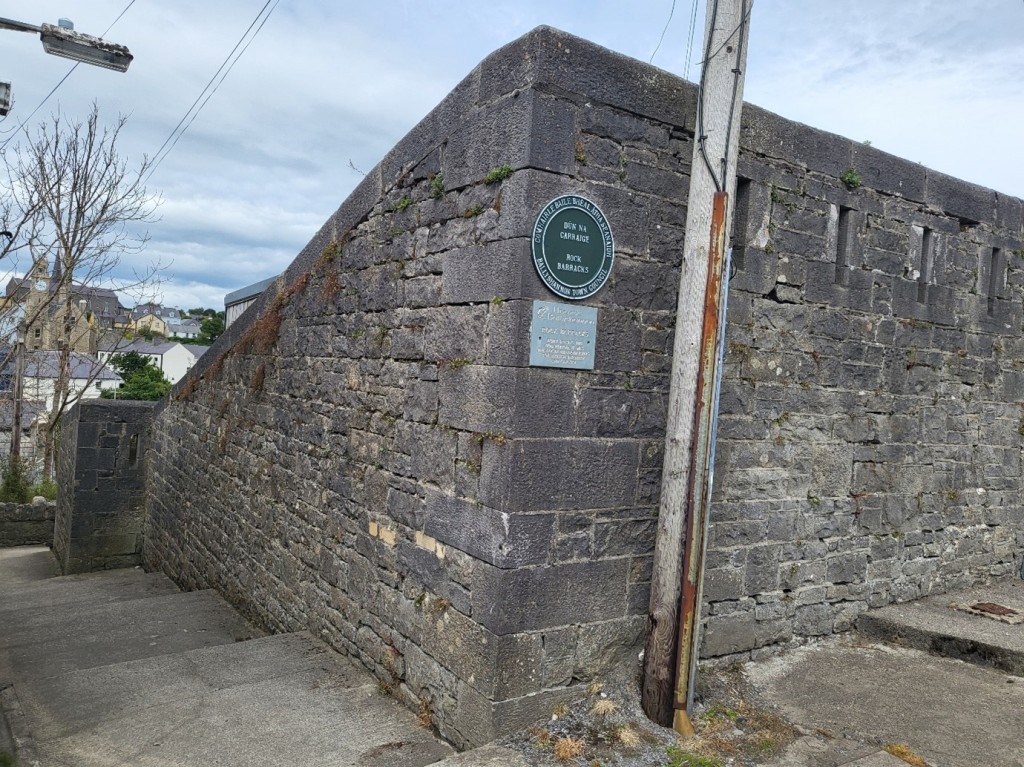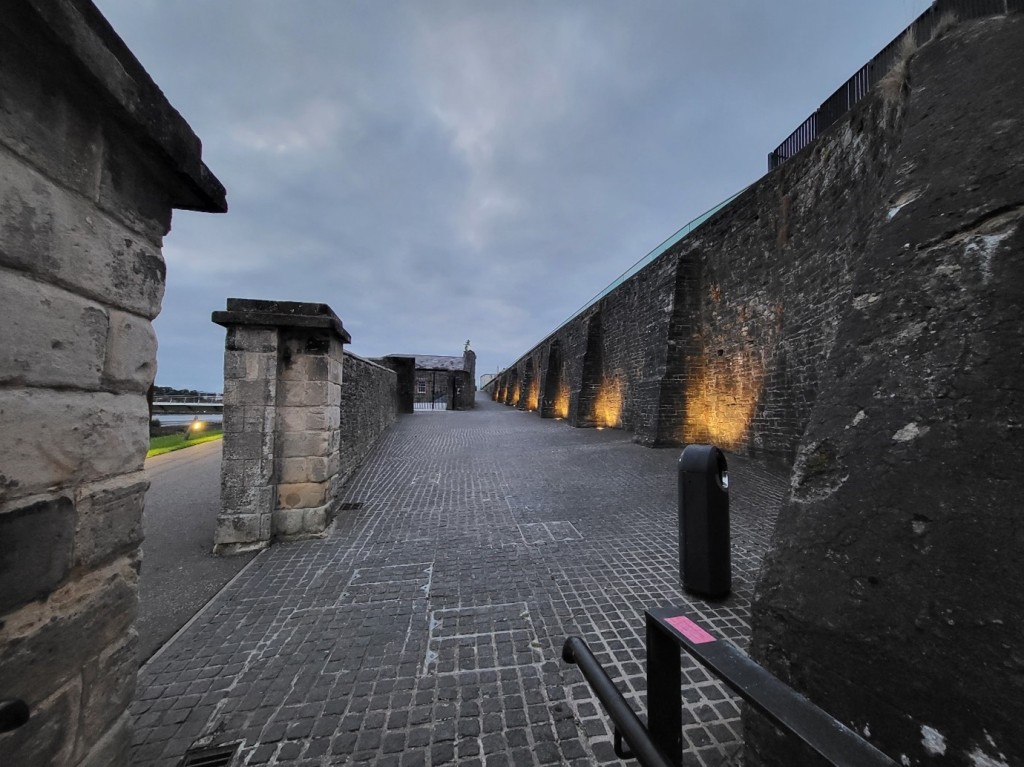Forts, such as the numerous Napoleonic examples which dot the Irish landscape, needed to be garrisoned. For this reason, many had barracks built within their walls. However, that was not always the case.
There were also stand-alone barracks, which were often just dormitories. These form the majority of military barracks prior to the mid-nineteenth century. That said, some barracks were intended withstand enemy fire in case of a surprise attack, and protect their occupants while they waited for reinforcements to come. Defensible barracks, as they are known, thus differ from forts in that their primary function was not to serve as offensive or defensive buildings, but they could do so if required for a short period of time.

Some larger defensible barracks such as Ebrington Barracks in Derry/Londonderry were surrounded by their own network of ramparts. The Ebrington site was not merely a barracks but also had stores and magazines, a hospital, a schoolhouse, and other ancillary structures which required extra protection. It also had numerous offices because the site served as the headquarters for several units including, most recently, the 8th Infantry Brigade of the British Army between 1914 and 2012. Unsurprisingly, regimental headquarters were usually fortified to some extent, as they were obviously prime targets. Other fortified barracks included those located in strategic positions such as near bridges and important roads. The level of threat dictated the level of investment in defence schemes, and fortified barracks provided the right amount of safeguarding for these areas which did not warrant the construction of full-scale forts, but still required some protection.

The same simple methods were generally used to fortify barracks, and they are easily recognisable. Fortified barracks were usually surrounded by walls pierced with loopholes through which muskets could be fired. There was also sometimes a ditch of some sort, and in some cases a proper moat, with a stone or brick counterscarp (the inner wall or face of a moat). Barracks were also sometimes built in older, abandoned star forts, whose earthen ramparts were reused to provide cheap protection. In particularly vulnerable locations, barracks could also be made bombproof by using casemates (fireproof chambers, usually stone-vaulted and reinforced with cast iron rods, which could withstand direct artillery fire).
Remarkable examples of purpose-built defensible barracks exist in all parts of the British Empire, including the huge Old Defensible Barracks in Pembroke Dock in Wales, Western Heights in Dover, and the Windmill Hill Barracks and the heavily fortified Defensible Barracks, both in Gibraltar. While the concept of providing protection to particularly important barracks was not new, these heavily engineered examples (including Ebrington) all have in common that they were built in the early 1840s, as artillery power kept improving and forced military engineers to develop ever stronger defences.
by Caroline Wilhelmsson
Further Reading
Douet, James, British Barracks 1600-1914: Their Architecture and Role in Society (London, 1998).
Hirst, Paul, ‘The Defence of Places: Fortifications as Architecture’, AA Files, nr 33 (1997), pp. 13-26.
Malley, Annesley J., ‘A History of Ebrington Barracks, Londonderry’ (2006).
Simpson, Robert, The Annals of Derry (Londonderry, 1847).
